Triumph is billing its new Trophy SE as a luxury tourer, a seemingly appropriate title for its home country whose total square miles amount to less than the state of Michigan. But here, with 47 more contiguous states through which to travel, what defines luxury takes on new meaning. How does the 2013 Trophy SE compare to the established heavyweight luxury tourers from BMW, Harley-Davidson and Honda?
A recent ride beginning in St. Andrews, Scotland, looping through the Highlands of Cairngorms National Park and returning to our origin 250 miles later, proved the Trophy SE has leapfrogged the majority of its competition. Although its styling bespeaks a motorcycle of sport-touring intentions, make no mistake, the SE version of the Trophy (the only iteration coming stateside) delivers on its promise of luxury.
Endowed with a serious arsenal of electronics, the new Trophy SE is light-years ahead of its Hinckley predecessors: the original model from 1991 - 1995 and the second generation from 1996 - 2003. Cruise control, intelligent linked brakes and ABS (non-switchable), traction control (switchable), ride-by-wire (RbW) throttle control, electric adjustments for the headlight and windscreen, and two 12-volt sockets are standard on both models while the SE also boasts an integrated audio/Bluetooth system, Triumph Electronic Suspension (TES), and a Tire Pressure Monitoring System (TPMS).
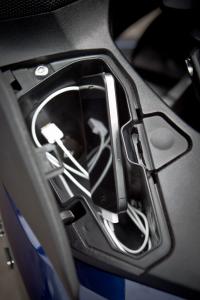 The 2013 Trophy SE is powered by the same 1215cc three-cylinder introduced in the adventure-touring Explorer model which produced 111.7 rear-wheel horsepower at 9000 rpm and 74.6 ft-lb of torque at 6300 rpm in our testing. It should be noted the Explorer made 60+ ft-lb of torque beginning at 2500 rpm and ending at 9300 rpm! The Trophy has a taller sixth gear for improved fuel economy, while other changes include a recalibrated engine management system and a welcome tweak to throttle control. Touchy to the extent of manic on the Explorer, the Trophy’s RbW exhibits none of the too-light throttle-return-spring issues of its adventure-touring counterpart.
The 2013 Trophy SE is powered by the same 1215cc three-cylinder introduced in the adventure-touring Explorer model which produced 111.7 rear-wheel horsepower at 9000 rpm and 74.6 ft-lb of torque at 6300 rpm in our testing. It should be noted the Explorer made 60+ ft-lb of torque beginning at 2500 rpm and ending at 9300 rpm! The Trophy has a taller sixth gear for improved fuel economy, while other changes include a recalibrated engine management system and a welcome tweak to throttle control. Touchy to the extent of manic on the Explorer, the Trophy’s RbW exhibits none of the too-light throttle-return-spring issues of its adventure-touring counterpart.Like the Explorer, there’s gobs of torque from basement to roof top. A handful of throttle at 35 mph in sixth gear generates forward thrust without a shudder or knock. Reserve amounts of torque are abundant no matter the speed or gear, the drawback being the omission of a horsepower rush of acceleration. But easy to manipulate power wherever and whenever you want, the Trophy delivers in spades.
Weighing a claimed 662 pounds wet, sans panniers, the Trophy is approximately 100 pounds heavier than the BMW R1200RT, its inevitable nemesis and the bike we’re aiming to test it against ASAP. Without a ruler by which to measure and compare, the Trophy seems to manage its weight upon a diversity of roads. Not once during our escapade did the Trophy step out of line or exhibit any ill-handling manners.
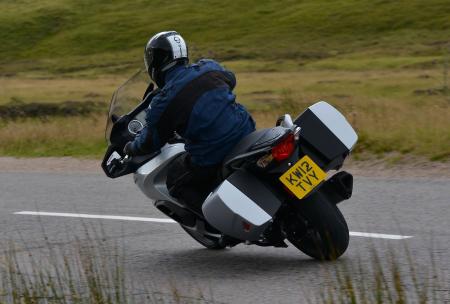 From tight, unmarked, undulating Highlands backroads to high-speed aggressive freeway riding the Trophy competently handled whatever was thrown at it. Triumph claims a 51.5% forward weight bias. From tight, unmarked, undulating Highlands backroads to high-speed aggressive freeway riding the Trophy competently handled whatever was thrown at it. Triumph claims a 51.5% forward weight bias. |
Chock up the Trophy’s good handling to its lightweight frame (24.9 lbs), 190 rear tire, the Triumph Dynamic Luggage System (TDLS), or a combination thereof, but one thing’s for certain, electronics certainly play a part.
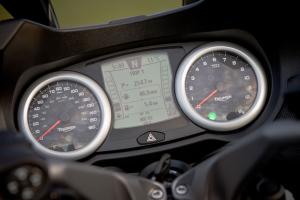 Electronic suspension – adjustable between Sport, Normal and Comfort damping settings on the fly, and preload settings for Solo, Solo plus Luggage and 2-Up when stationary – is a technology we’ve been crowing about since first testing it on the Ducati Multistrada years ago. The ability to change suspension characteristics with the push of a button is a useful, everyday convenience and one a lot of competitors to the Trophy do not possess.
Electronic suspension – adjustable between Sport, Normal and Comfort damping settings on the fly, and preload settings for Solo, Solo plus Luggage and 2-Up when stationary – is a technology we’ve been crowing about since first testing it on the Ducati Multistrada years ago. The ability to change suspension characteristics with the push of a button is a useful, everyday convenience and one a lot of competitors to the Trophy do not possess. In addition to electronic suspension, the Trophy SE comes standard with switchable traction control, cruise control, non-switchable ABS and intelligent linked braking – when engaging the rear brake, pressure to the front caliper varies by way of a delay valve while a proportional control valve corrects pressure to the rear caliper depending on the amount of pressure being given to the front caliper.
The TPMS (standard on the SE) can also be considered intelligent. To keep from needlessly draining the battery, the system automatically shuts off when the bike is not in motion.
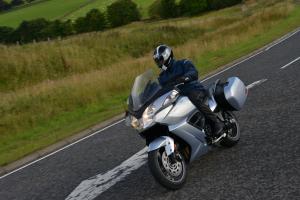 In 2012, BMW’s R1200RT retailed for $17,350, so it’s priced below the Trophy, but the standard RT lacks technologies like traction control, cruise control, tire pressure monitoring and an integrated audio system. These features can be added but at a cost that brings the MSRP of the RT equal to that of the Trophy SE. And then you still have an air-cooled Twin with less performance than that of the Triumph’s three-cylinder mill. One big advantage of the BMW is its claimed 100-pound less wet weight – an advantage no technology or aftermarket addition can equal.
In 2012, BMW’s R1200RT retailed for $17,350, so it’s priced below the Trophy, but the standard RT lacks technologies like traction control, cruise control, tire pressure monitoring and an integrated audio system. These features can be added but at a cost that brings the MSRP of the RT equal to that of the Trophy SE. And then you still have an air-cooled Twin with less performance than that of the Triumph’s three-cylinder mill. One big advantage of the BMW is its claimed 100-pound less wet weight – an advantage no technology or aftermarket addition can equal.As mentioned earlier, the U.S only receives the SE model, and these will come with the low seat as standard equipment (adjustable between 30.7 in and 29.9 in), while a taller seat (adjustable between 32.3 in and 31.5 in) is available as an option. Bikes should be arriving here in late December or early January.
In either guise, the new Trophy has proven itself a serious luxury performance-tourer with handling and an electronics package resembling BMW’s stellar K1600GT/GTL but with half the cylinders.
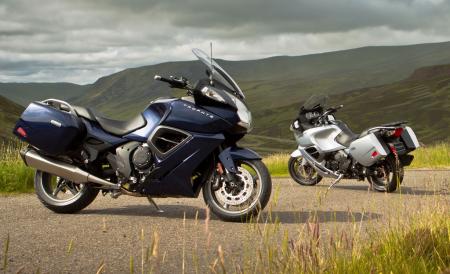 The 2013 Trophy SE retails for $18,999 and is available in either Pacific Blue or Lunar Silver color schemes. The 2013 Trophy SE retails for $18,999 and is available in either Pacific Blue or Lunar Silver color schemes. |
| 2013 Triumph Trophy Specs | |
| Engine and Transmission | |
| Type | Liquid-cooled, 12 valve, DOHC, in-line 3-cylinder |
| Capacity | 1215cc |
| Bore/Stroke | 85 x 71.4mm |
| Fuel System | Ride by wire, fuel injection |
| Exhaust | Stainless steel 3 into 1, side mounted stainless steel silencer |
| Final Drive | Shaft Drive |
| Clutch | Wet Multi-Plate |
| Gearbox | 6 Speed Constant Mesh |
| Oil Capacity | 4.0 litres (1.1 US gals) |
| Chassis, Running Gear and Dislays | |
| Frame | Aluminum beam twin-spar |
| Swingarm | Single-sided, cast aluminum alloy with shaft drive |
| Front Wheel | Cast aluminum 5-spoke 17 x 3.5in |
| Rear Wheel | Cast aluminum 5-spoke 17 x 6.0in |
| Tires | Front - 120/70 ZR17, Rear - 190/55 ZR17 |
| Front Suspension | Base - WP 43mm upside down forks, manually adjustable rebound damping, with 130mm travel. |
| SE Model - WP 43mm upside down forks, electronically adjustable rebound damping (sport/normal/ comfort) with 127mm travel | |
| Rear Suspension | Base - WP monoshock with remote oil reservoir, manually adjustable hydraulic preload, manually adjustable rebound damping, 120mm rear wheel travel. |
| SE Model - WP monoshock with remote oil reservoir, electronically adjustable hydraulic preload (1up, 1up+luggage, 2up), electronically adjustable rebound damping (sport, normal, comfort), 120mm rear wheel travel | |
| Front Brake | Twin 320mm floating discs, Nissin 4-piston calipers, linked brakes (front brakes partially activated by rear), ABS (non-switchable) |
| Rear Brake | Single 282mm disc, Nissin 2-piston sliding caliper, ABS (nonswitchable) |
| Front Brake Master Cylinder | Nissin integrated reservoir master cylinder 14mm diameter |
| Instrument Display | Dual analogue gauges (speedometer and tachometer) with multifunction dot matrix LCD to display trip information with ambient light level brightness compensation, dual trip computers (1 with adjustable automatic reset), fuel gauge, range to empty indication, service indicator, gear position indication, clock, air temperature, frost warning and accessory heated seats/grips status display, hazard warning light button, cruise control status, headlight position adjustment and scroll button on handlebars SE Model - audio system information, TES status, TPMS status |
| Dimensions and Capacities | |
| Length | 2235mm (87.9in) |
| Width (handlebars) | 975mm (38.4in) |
| Height (without mirrors) | 1435mm (56.5in) - 1555mm (61.2in) |
| Seat Height | 770mm (30.3in) - 790mm (31.1in) |
| Wheelbase | 1542mm (60.7in) |
| Rake/Trail | 27.0º / 119.0mm |
| Fuel Tank Capacity | 26 litres (6.9 US gals) |
| Wet Weight (without panniers) | 301kg (662lbs) |
| Pannier Capacity (per side) | 31 litres (8.2 US gals) |
| Pannier Max Load (per side) | 10kg (22lbs) |
| Performance (Measured at crankshaft to 95/1/EC) | |
| Maximum Power | 134PS / 132bhp / 99kW @ 8900rpm |
| Maximum Torque | 120Nm / 89ft.lbs @ 6450rpm |



 10:22 PM
10:22 PM
 Unknown
Unknown


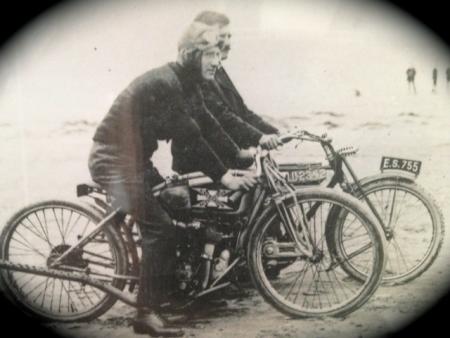 Racing on the West Sands circa 1920. (Photo courtesy of Douglas Turner)
Racing on the West Sands circa 1920. (Photo courtesy of Douglas Turner)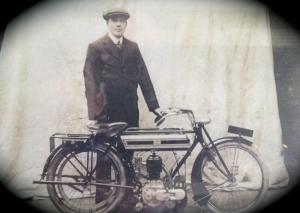
 Posted in:
Posted in: 




0 comments:
Post a Comment